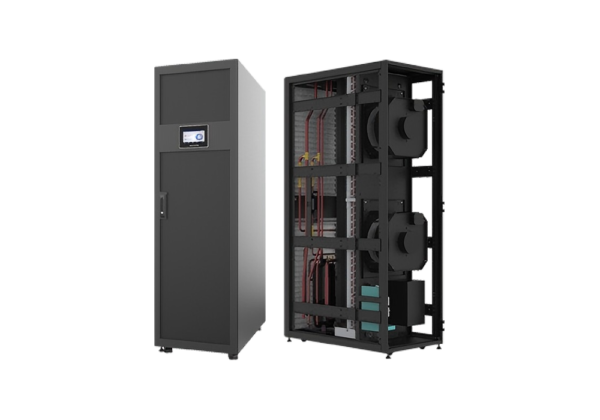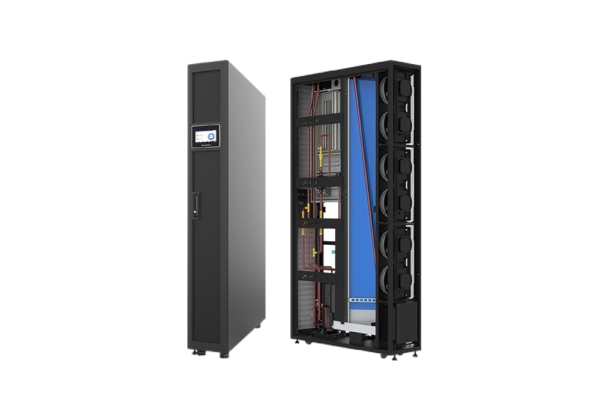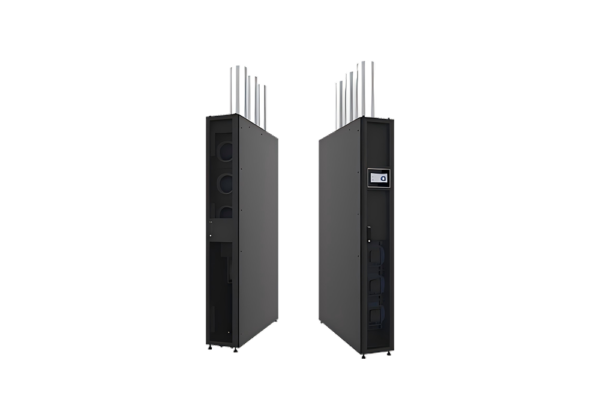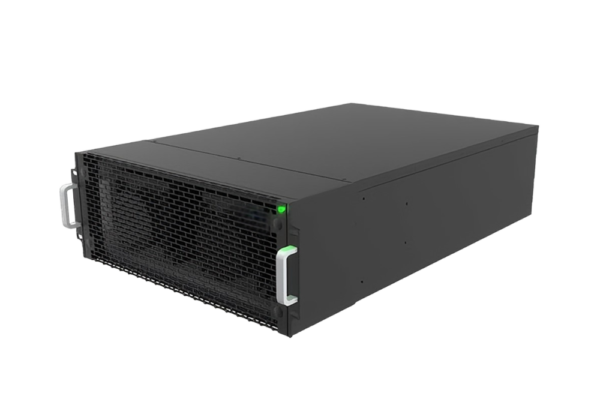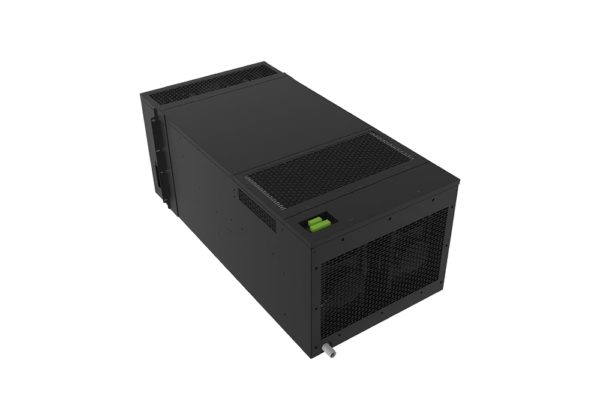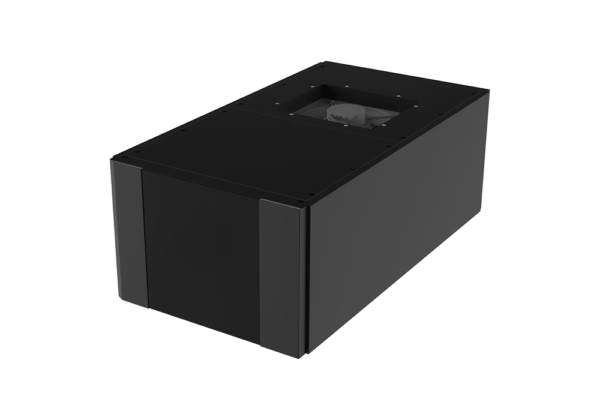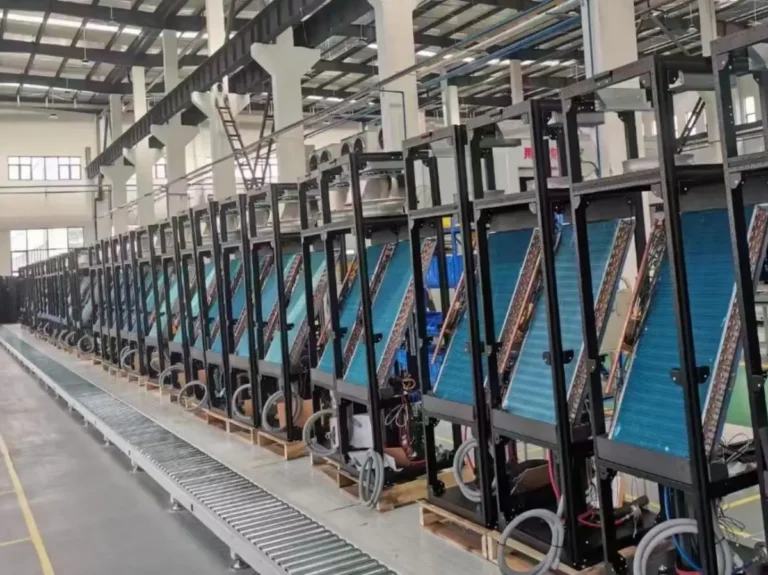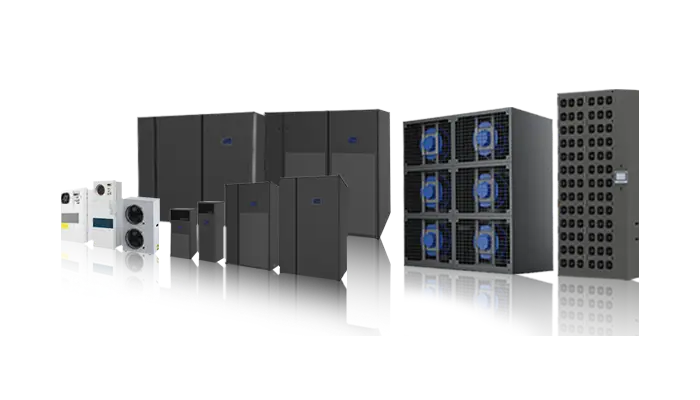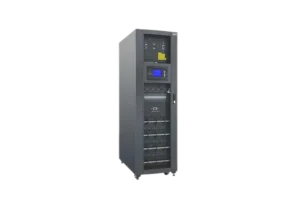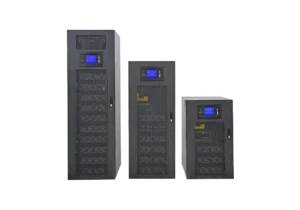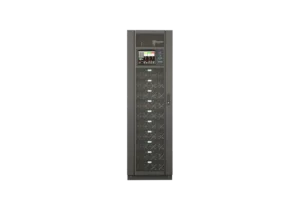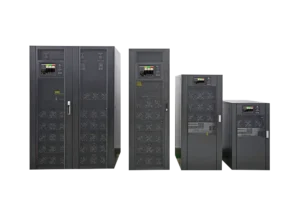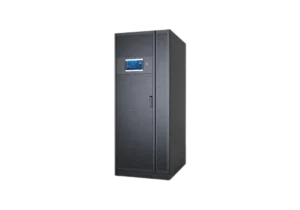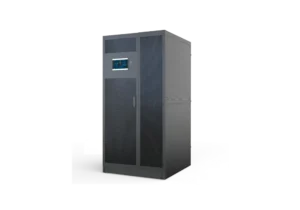As modern data centers evolve to handle increasing rack power densities, choosing between row precision AC systems and rack precision cooling becomes a critical decision. The right solution ensures thermal stability, energy efficiency, and long-term scalability. In this guide, we’ll explore in-row cooling vs rack cooling, highlight their strengths and limitations, and identify which option is best suited for high density cooling solutions in demanding environments.
Understanding the Options
What is Row Precision Cooling?
Row precision cooling, also called in-row cooling, places the cooling unit directly between or beside racks in a data center row. These systems deliver chilled air closer to the equipment’s heat source, minimizing air mixing and maximizing efficiency.
Soeteck’s precision in-row systems typically range from 7.5 kW to 90.5 kW, offering consistent airflow distribution and rapid heat removal. This makes them ideal for high-density rows, modular setups, and growing server environments where flexibility and control are essential.
What is Rack Precision Cooling?
Rack precision cooling refers to systems mounted within or directly behind individual server racks. These units provide localized, rack-level cooling that removes heat at its origin. Soeteck’s rack precision systems handle 3.9 kW to 12.8 kW in capacity and can be designed as split-type or chilled-water systems. This approach ensures precise temperature regulation, making it perfect for compact or edge data centers where every rack has unique thermal needs.
Comparing Row vs Rack Cooling
When evaluating row vs rack cooling, it’s important to understand the cooling scope, performance, and operational goals of each setup.
In-Row precision cooling manages temperature at the row level, serving multiple racks through shared airflow. It’s efficient for data centers with medium to high density, where airflow uniformity and redundancy can be managed collectively.
Rack precision cooling, on the other hand, cools each rack individually. This makes it highly effective for extremely dense racks or mission-critical servers that cannot rely on shared cooling. The trade-off is higher complexity and slightly increased maintenance per unit, but it ensures targeted precision.
Advantages of In-Row Cooling
- Efficient Airflow Control: Cool air is supplied directly to the server inlets, reducing losses and ensuring consistent temperature.
- Scalability: Easy to add or reposition as data center requirements grow.
- Lower Energy Loss: Minimizes mixing of hot and cold air streams.
- Redundancy at Row Level: Shared cooling among racks enables N+1 redundancy without excessive equipment.
- Ideal for Modular Data Centers: Fits well in contained aisles or modular row setups.
Advantages of Rack Precision Cooling
- Localized Thermal Management: Perfect for high-density or edge computing applications.
- Enhanced Precision: Each rack receives its own controlled cooling cycle.
- Compact Design: Integrates directly into the rack footprint, saving valuable floor space.
- Optimized for Ultra-High Density: Effective for racks generating above 15–20 kW of heat.
- Reduced Heat Recirculation: Cools air immediately as it exits the server exhaust.
Choosing the Right Cooling Method
To determine whether in-row cooling vs rack cooling suits your needs, consider the following:
- Rack Density: If rack power consumption is between 3 kW and 10 kW, in-row cooling is often more efficient. For ultra-dense setups exceeding 15 kW per rack, rack precision cooling may be better.
- Available Infrastructure: Data centers with existing chilled-water systems can benefit from chilled-water rack cooling, while DX-based systems may prefer in-row setups.
- Redundancy Requirements: In-row cooling supports shared redundancy, while rack-level systems require separate backup units.
- Maintenance and Accessibility: In-row units are easier to access for maintenance, while rack-mounted systems may need partial disassembly for servicing.
- Space Constraints: For limited spaces or edge deployments, rack-level cooling provides maximum efficiency in minimal area.
Real-World Applications
- Enterprise Data Centers: In-row cooling works well in medium to large facilities requiring balanced airflow and modular expansion.
- Edge and Micro Data Centers: Rack precision cooling offers compact, direct cooling ideal for small-scale, high-density applications.
- High-Performance Computing (HPC): Combining in-row and rack precision systems allows efficient management of varying rack densities.
- Container and Modular Data Centers: In-row systems provide integrated, scalable thermal solutions in prefabricated modules.
Hybrid Cooling Strategies
Many organizations are now adopting hybrid cooling approaches. By combining row precision cooling for general rack rows and rack precision systems for the densest loads, data centers can balance efficiency, redundancy, and cost. This method ensures high performance even under varying workloads and future expansions.
Hybrid models also support flexible deployment, as load patterns change, more rack-level units can be introduced without reengineering the entire cooling infrastructure. This adaptability aligns with Soeteck’s modular design philosophy, allowing data centers to scale cooling dynamically with demand.
Energy Efficiency and Sustainability
Precision cooling technologies contribute significantly to a data center’s energy efficiency. In-row systems reduce fan energy use and prevent thermal hotspots, while rack precision units eliminate the need for large air distribution paths. Together, they lower power usage effectiveness (PUE) and reduce overall energy consumption.
Both systems can be equipped with inverter compressors, EC fans, and smart controls to optimize cooling capacity according to load fluctuations, resulting in substantial operational savings over time.
Final Thoughts
In the debate of row vs rack cooling, there isn’t a one-size-fits-all answer. Each data center’s architecture, rack density, and operational goals determine which solution is optimal.
For most high density cooling solutions, in-row cooling provides excellent scalability, redundancy, and cost-efficiency. However, for extremely high-density environments or mission-critical racks, rack precision cooling ensures unmatched accuracy and localized temperature control.
The best results often come from combining both, using row precision cooling for general loads and rack cooling for high-performance systems. This balanced approach ensures reliability, efficiency, and sustainability, all essential factors for the modern data-driven world.

